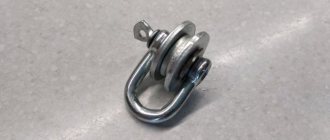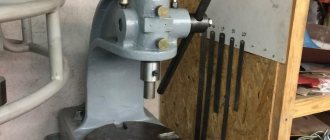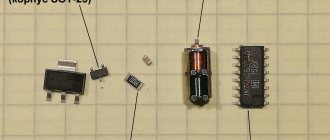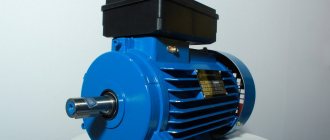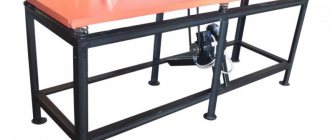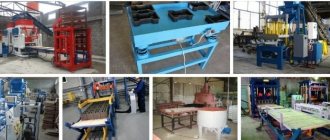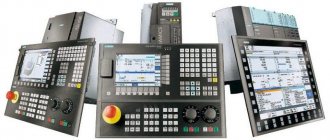Today, many people have heard about sandblasting, but few people fully understand how it all works. Although this method of surface treatment was invented quite a long time ago and is widely used in our time. This material will help you understand some of the intricacies of sandblasting. What does it consist of, how does it work, what pressure is needed to work? These and other issues are discussed in detail below. Particular attention is paid to the protection of the worker who uses the sandblasting machine. A few words have been said about the main parameters of sandblasting, which should be taken into account when choosing such equipment. An example of how to make a sandblasting machine with your own hands is also given.
Scope of sandblasting machines
You should start with the area where sandblasting is used. The most famous application of this processing method is for cleaning metal during body repair or when painting car rims. Devices for such processing have high pressure, with the help of which a sand jet removes the remains of old paint, soil, rust or scale from the metal surface.
Sandblasted metal lasts much longer after painting, largely due to the fact that such cleaning is better than other methods of removing metal coating. Small grains of sand cut into the surface being treated at high speed, thereby knocking down even those traces of corrosion that are located in small pores or cracks, where they are difficult to reach with traditional tools.
In addition to the quality of cleaning from old coating and traces of corrosion, sandblasting leaves behind a smoother surface. There are no scratches that occur after using brush cleaning, or using sandpaper with large abrasive particles. This makes it much easier to apply the first layer of primer and improves the quality of its adhesion to the metal.
In addition to body repair, sandblasting is widely used in other areas of human activity. This is how large ships, parts and products are cleaned in factories. In addition to metal, this processing method is also applicable to other types of materials, for example, for cleaning wood, brick or concrete products.
Sandblasting machines are used to create specific effects on wood or glass. Wooden products after processing can acquire all kinds of patterns. Sandblasting is used to frost glass, which is used for decorative purposes, for example, for engraving in the form of different patterns. Some sandblasting machines can be used to drill holes in glass, which can be round or other shapes.
Do-it-yourself sandblasting using a fire extinguisher
When using a cylinder for a fire extinguisher, the result is almost the same device as in the case of a gas cylinder, only of a more compact size. The disadvantage of this design is the small sand container, which will need to be constantly filled. Significant advantages are the compact size and convenient transportation of the device.
On a note! Making a sandblast from a fire extinguisher is much easier due to the fact that the valve is much easier to unscrew than when using a gas cylinder.
As in the gas cylinder design, you will need to make a hole in the bottom of the fire extinguisher to fill it with sand. Then a threaded fitting is attached to the hole made. To make the structure more stable, it is recommended to weld metal legs to the cylinder. This technique will also help ensure that the hose is connected from below.
To create a complete structure, you will need to purchase a set of fittings and a tap. In general, the finished installation will look like this:
- a tap is installed at the outlet of the fire extinguisher cylinder;
- on the left side there is an output where the compressor will be connected;
- on the right, the exit for the sandblasting hose is being prepared.
Also, to create a sandblaster from a fire extinguisher, you will need to purchase a set of fittings and a tap.
Then you need to connect a compressor to the device, and also install a sandblasting gun purchased or made by yourself. The resulting small device is considered an ideal option for performing small jobs.
Sandblasting machine device
Any sandblasting machine consists of the following elements:
- a compressor that creates the required air flow pressure;
- storage receiver;
- a gun through which a stream of sand is directed onto the surface to be treated;
- container with sand or other abrasive material;
- automation and control system;
- connecting hoses.
The automation system is designed to control the pressure in the supply to the gun. There is also an automated compressor emergency shutdown system in case of problems in the work area. For example, when the work gun was accidentally released from the hands or in the event of a sandblaster falling.
The control system ensures that the compressor is turned on and off. Also, with its help, the equipment is switched to idle and operating modes. Sometimes it is located not only in the working area, but also in areas of additional sandblasting maintenance. For example, the equipment can be controlled by an assistant who monitors the level of sand in containers. He does this either independently or at the command of the sandblaster.
Connecting hoses are a very important element of sandblasting. The power and performance of the device depends on them. When selecting or manufacturing sandblasting hoses, the pressure they can withstand is taken into account. An equally important parameter is their diameter and internal resistance. The productivity and power of sandblasting is significantly affected by the length of the hoses.
What can you use, besides sand, to make your own sandblasting chamber?
In addition to sand, other types of consumables are suitable for operating the device:
- Nickel and cooper slag. Some of the most popular options for sandblasting, which are obtained from copper and nickel production waste. The cost is the same as treated sand, but they are stronger and harder.
- Steel and cast iron shot. Not only the most expensive option, but also the most durable. Used for quick but rough surface treatment.
- Pomegranate sand. Harder than ordinary sand, but just as fragile. It is expensive and rarely used for work.
- Glass and stainless steel shot. Sandblasting glass is mainly used for cleaning stainless steel surfaces.
- Electrocorundum. Solid crystalline form of aluminum oxide. Virtually undamaged and suitable for even the most contaminated surfaces.
Steel and cast iron shot is the most durable abrasive.
If you look at photos of sandblasting, you will notice that the chamber is a rectangular structure. Most often this is a box welded from a metal corner, which is lined with thin steel sheets up to 1 mm thick. To make it easier to control the amount of abrasive during operation, it is best to place a glass or plastic viewing window along the long side.
On the front wall of the chamber there are 2 symmetrical holes with a diameter of 100-120 mm, into which special thick gloves are inserted. It should be borne in mind that they will be constantly exposed to abrasive forces, so replacing these elements should not cause difficulties.
The bottom of the chamber is made of reinforced mesh, under which there is a trench for used abrasive. Comfortable work is ensured by lighting. To do this, just take 2 lamps of the required size. The sandblasting gun is placed inside the chamber, and air is supplied using a hose connected to the outside. Thus, the material will not fly out, which will make it possible to reuse it. In fact, this design option allows you to create a sandblasting gun with an abrasive recycling system.
On a note! If you plan to clean non-standard products of large shape, it is recommended to cover the side edges with a durable tarpaulin. To make the camera as convenient as possible, you should not do the work by eye - it is better to prepare a drawing first.
In addition to sand, nickel and cooper slag, garnet sand, glass and stainless steel shot, as well as electrocorundum are used.
Operating principle of sandblasting machine
The operating principle of sandblasting may vary slightly depending on the type, but most of them work as follows:
- the compressor creates air pressure that accumulates in the receiver;
- when the pressure required for sandblasting is created, the air flow is supplied to the gun;
- after air is supplied to the gun, a vacuum appears in it, which draws the abrasive substance from the container. Sand can also be forced into the gun;
- then the air-sand mixture is ejected from the gun with high acceleration and directed onto the surface to be treated.
Some sandblasters may work differently, but the operating principle described is the most common.
Step-by-step assembly of sandblasting with your own hands
After all the parts necessary for manufacturing have been prepared, we proceed directly to assembly. First you need to completely empty the cylinder of gas. To do this, unscrew the valve and wait until the gas comes out completely. You need to be extremely careful, because if you ignore this stage, unpleasant consequences are possible. To be sure that the gas has completely left the cylinder, it is recommended to insert a hose previously connected to the compressor. Then the gas mixture is completely pumped out.
After the tank is completely empty, you need to make 2 holes in it: one at the bottom of the tank (1.2 cm in diameter), the second on the opposite side. It is in the second hole that a 2-inch tap will be installed. A pipe of the same diameter is also attached here. Then the following steps are performed:
The nozzle attached to the hose must be secured with a clamp.
- A DU-15 steel tee is welded to the bottom of the cylinder, where the sand will collect. Only high-quality welding will ensure the tightness of the connection.
- To ensure stability of the structure, a tripod should be welded or the wheels should be secured. The second option will greatly facilitate the transportation of the device from place to place.
- After completing the frame manufacturing work, they begin fastening small components. A fitting is placed on each thread, and all functional units are sealed with fum tape. It is important to ensure that all connections are tight.
- Threaded bushings are mounted on the open ends of the installed tee. One of the outlets of the pipe is closed with a 14 mm hose, and the second with a copper tube with a diameter of 10 mm. A reinforced sleeve is attached to the copper pipe.
- A 14 mm fitting is connected to the valve on the cylinder. Then you need to take a 14 mm hose and fix it (using a collet clamp) to the cylinder, the other edge is attached to the tee with a clamp.
- A sleeve is mounted on the remaining free end of the tee, connecting the tee mixer with the nozzle.
At the last stage, the compressor is connected to the mixer using a 10 mm hose, after which you can try to connect the installation and begin operation. If it is necessary to increase the sand supply power, an additional fitting is attached to the container, the other end of which is connected to the compressor.
Types of compressors for sandblasting machines
It is worth saying a few words about compressors, with the help of which the pressure required in terms of power and performance is created. The most common of them are piston ones, since their power is sufficient for simple devices with low performance requirements.
There are also screw compressors. This type is considered more productive, which is why they are used where constant pressure with high performance is needed. Such compressors can work even with small storage receivers. Their performance is quite enough to provide pressure to the working gun in real time.
Main settings
Now a few words about the main parameters of compressors for sandblasting machines - power and performance. In this case, the first characteristic is measured in units of pressure that the compressor can create.
A device that can produce 9 atmospheres is considered more powerful than one that produces only 6 atmospheres. The optimal figure is considered to be 7-8 atm. Moreover, on the compressor, in the sandblasting machine and on the hose nozzle, the number varies depending on the size of the nozzle.
An important indicator for sandblasting compressors is their performance. This parameter shows the amount of compressed air that the device can produce in a certain period of time. Capacity is usually measured in liters of air per minute. Accordingly, the volume of sand that can be supplied to the working area per unit of time directly depends on this value.
Other parameters of compressors are considered secondary, and therefore, when choosing equipment, they are not particularly paid attention to. These include the power consumption of the electric motor, uninterrupted operation time, and the number of revolutions per minute. The power and productivity of sandblasting also depend on these parameters, however, when choosing, they still focus on the main indicators.
Popular models of compressors for sandblasting are presented on the market by such certified brands as Abac, Berg, ChKZ, Ceccato, Atmos, Remeza, Alup, Kaeser, Fini, ZIF.
How to make sandblasting with your own hands from a gas cylinder
On the Internet you can find a large number of “Do it yourself sandblasting” videos that show how to make devices from a gas cylinder. It is this version of the design that is considered not only durable, but also reliable. It is important to follow the instructions while working to avoid accidents. For manufacturing you will need to use the following parts:
- propane or freon gas cylinder;
- powerful compressor with a capacity of at least 500 l/min and a power of 3 kW;
- ball valves that regulate the supply of air and abrasive sand;
- a fragment of a steel water pipe with a thread and a plug, which will be used as a funnel for sand, the optimal diameter is 2 inches;
- tee with thread marked “DU 15”;
- two-meter rubber sleeve with a diameter of 14 mm;
- hose with a cross-section of 10 mm and a length of at least 5 meters;
- 5-meter gas hose, the diameter of which is 10 mm;
- clamps and fittings for hoses, it is better to take extra;
- nozzle;
- sandblasting nozzle for compressor;
- fum tape for reliable sealing and compaction of docking units.
Sandblasting devices made from a gas cylinder are considered not only durable, but also reliable.
The nozzle, as already mentioned, can be purchased or made independently from a car spark plug or a metal rod. The main thing is to remember that 80% of the convenience and quality of work will depend on this detail: it is thanks to the nozzle in the sandblast that the necessary pressure is ensured.
In short, to make a nozzle you will need a piece of metal rod 3 cm long and 1 cm in diameter. The first 2 centimeters of length are bored to 2.5 mm, the remaining piece should have a larger diameter - approximately 6-6.5 mm.
Features and characteristics of the pistol
For a pistol, the main parameters are:
- its performance;
- operating pressure;
- nozzle diameter;
- method of capturing an abrasive composition.
All of these characteristics, except the last one, depend proportionally on the compressor and the design features of the gun itself.
For example, with a larger nozzle diameter, the gun's performance will be greater. However, at the same pressure values, a nozzle with a larger diameter will have a lower jet power. This means that a larger amount of sand will be supplied, but its acceleration speed will be lower.
These parameters are selected depending on the task facing sandblasting. For example, when processing brick or concrete walls, wood products and so on, less jet power is required, while productivity is needed as much as possible. But when processing glass, metal and other hard surfaces, a jet with high acceleration is needed.
Personal protection for sandblaster
When working with sandblasting machines, special attention is paid to the individual protection of the sandblaster. This type of material processing poses several dangers to human health.
The first of them is grains of sand flying out at very high speeds, which can reach 700 kilometers per hour. Many particles ricochet off the surface being treated, which can cause serious injury to the skin. To protect yourself from their effects, you must use the following personal protective equipment:
- special shoes;
- overalls made of durable material;
- leather gloves;
- protective helmet.
Sand dust and other particles knocked off the surface being treated have a negative effect on the respiratory system. To protect against this harm, the sandblasting helmet is equipped with an independent air source. Air usually comes from outside the work shop and is forced into the helmet for breathing. Sometimes self-contained air supply systems are used, similar to those used by scuba divers.
Well, the last, no less dangerous source of harm to health is noise. Its creation involves a rather loud compressor, a whistling stream of compressed air and the noise of sand hitting the surface being treated. If you remain under the influence of all these noises for a long time, you can very quickly get injured in your hearing aid. To protect against excess noise, special sound-absorbing headphones are used, mounted in the sandblaster’s helmet.
Room for working with a sandblasting machine
When working with a sandblasting machine, it is a good idea to take care of creating the necessary conditions in the workroom. The main enemy of sandblasting is excess moisture, since when sandblasting is carried out, productivity can be significantly affected by its humidity. Therefore, first of all, care is taken to remove excess moisture from the room. Also for this purpose, professional sandblasting machines are equipped with air dryers, which is taken and supplied from the compressor to the working gun.
An equally important factor is the purity of the air from impurities. In addition to cleaning it in the workroom, filtration is used directly in the devices. The suction flow is cleared of oil and other impurities, which ensures better mixing with sand and supply to the working area.
Also, the sandblasting chamber should be able to be easily cleaned of sand residues. If you work with sandblasting at an amateur level, then you should choose a room for this where the sand will not interfere. After all, it will be very difficult to completely remove it. It is best to equip a special sealed chamber for this work and use it only for these purposes.
